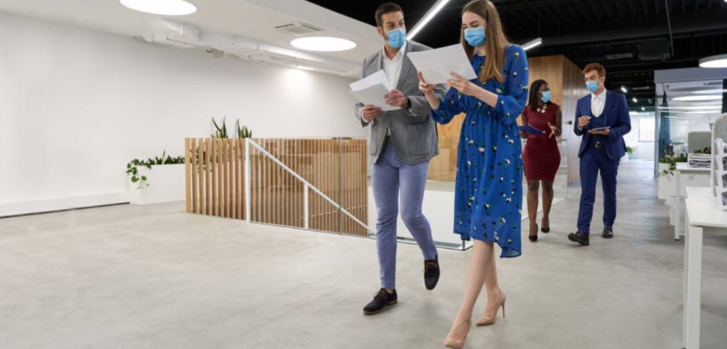If you’re about to welcome employees back into the workplace, ensure they will be protected from COVID-19 by conducting a pandemic-specific hazard assessment. It’s an essential step in managing workplace hazards, whether they involve safety issues, such as slips, trips and falls and machine hazards, or health risks, such as COVID-19.
“The assessment will help you identify where, when and how transmission could occur,” says WSPS Consulting Representative Troy Nel. “With this information in hand, you’ll be able to put effective controls in place.”
Ontario’s workplace safety plan builder offers a three-step process to help you think through possible COVID-19 hazards and put together an action plan. In the process, says Troy, include possible psychosocial hazards, and how COVID-19 could affect existing health and safety procedures, such as emergency response and workplace violence and harassment.

Gear your COVID-19 hazard assessment to the characteristics of this unique hazard. The virus spreads primarily through respiratory droplets from an infected person, and also when people touch contaminated surfaces and then touch their face. So, it’s important to identify where and when these contacts may occur and who is at the greatest risk.
Put a team together that includes your joint health and safety committee or representative to carry out the hazard assessment. Including an employee representative will create buy-in and compliance with the implemented policies and controls.
To get you started, we’ve compiled a sample list of possible considerations and controls. For more comprehensive guidance, see the tools and resources at the end of this article.
- close proximity. Where and when do workers have close contact? Among the possibilities: entering and exiting the facility, in lunchrooms, washrooms, offices, meeting rooms, enclosed areas, on walkways or in halls, and while working on a production line or carrying out tasks that require more than one person.
Possible controls: physical distancing, masks and eye protection, increased ventilation, one-way directional markers, staggered work shifts and breaks, plexiglass barriers, capacity limits, screening, rapid testing, and a vaccination policy. - high touch surfaces and shared tools and equipment
Possible controls: regularly sanitizing and disinfecting of surfaces, cleaning tools and equipment between shifts, providing hand sanitizing stations. - activities that cause people to expel air more deeply, such as physically demanding work
Possible controls: segregated work areas, greater distancing, barriers. - air quality. An effective ventilation system can help dilute respiratory droplets.
Possible controls: increasing intake of fresh air into your HVAC system, upgrading filters, and opening windows and doors. - susceptible workers. Employees who are older or have existing medical conditions that put them at increased risk from COVID-19.
Possible controls: working from home, segregating tasks, wearing masks and other personal protective equipment. - mental health. Returning to work could heighten employee anxiety and stress about contracting the virus, especially if they’ve been working from home. Anticipate this response as part of your hazard assessment, says Troy. A pre-return survey could help you gauge how comfortable people are returning to work, and identify concerns to be addressed.
Read this article for suggestions on how to alleviate COVID concerns among employees and help them cope: Mental Health Challenges and COVID Wave 2 – help your employees with these 7 practices. - emergency response. Revisit your emergency response procedures to ensure they don’t increase risks for transmitting COVID-19, advises Troy. “Employees may come into close contact during a fire drill, while sheltering in place, especially in a poorly ventilated room, or when rendering first aid.” Identify the risks, consider what controls are required, and rework your program and procedures to reduce risks.
Article From: WSPS

